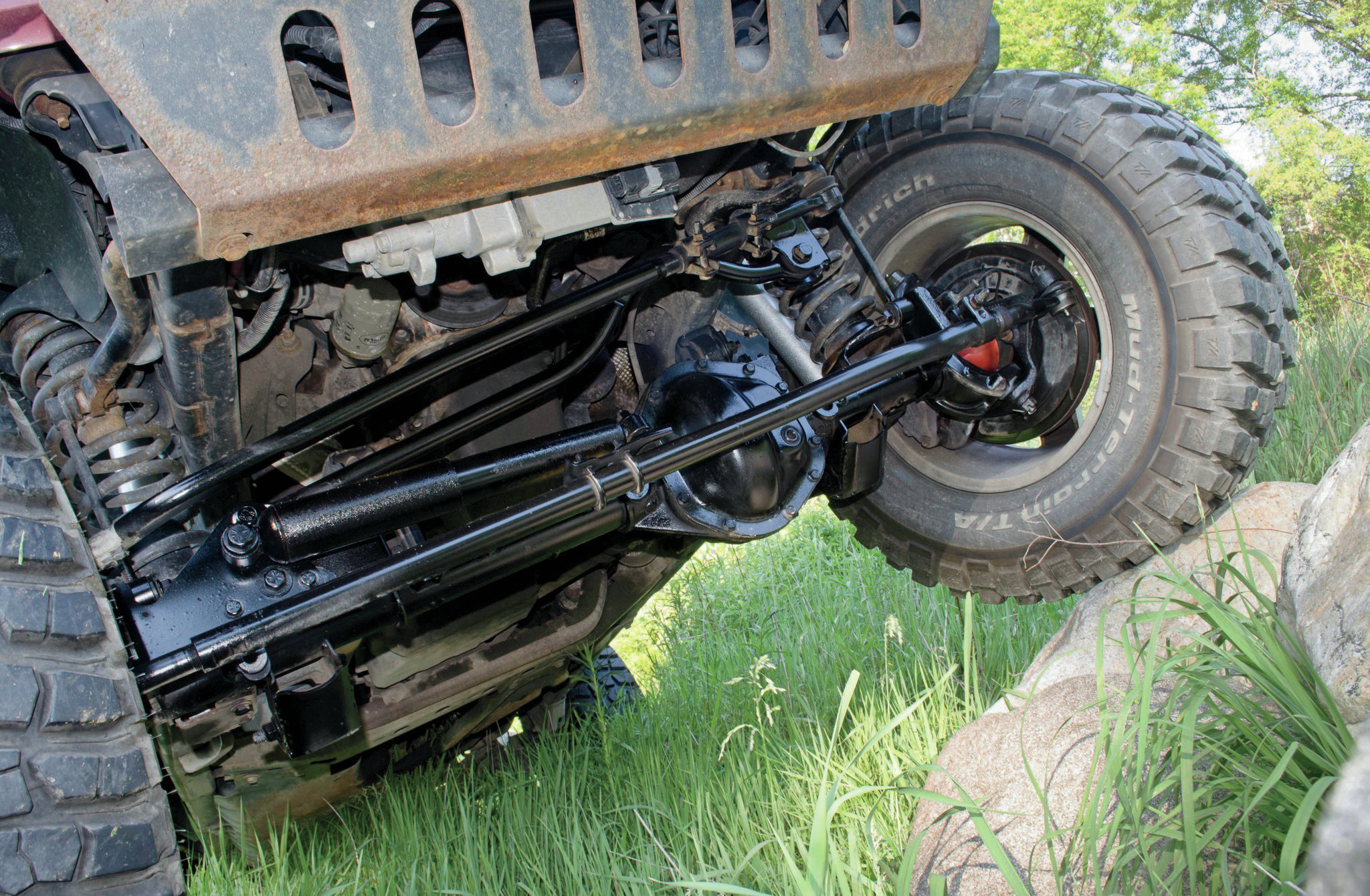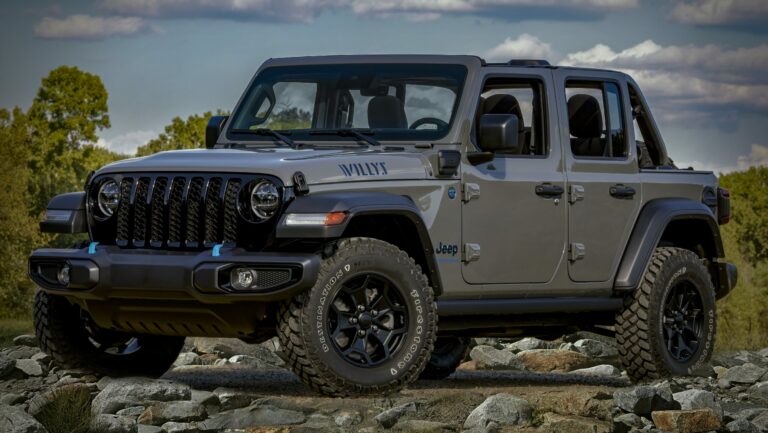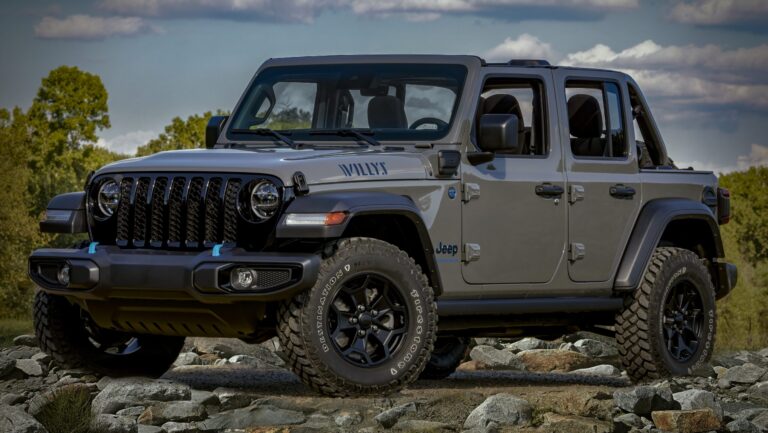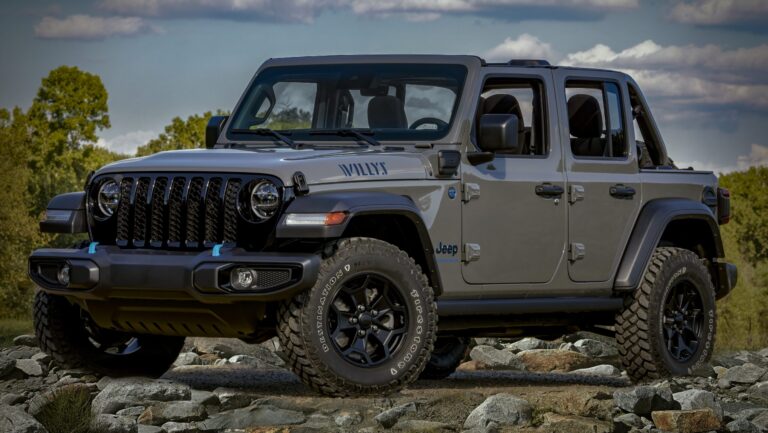Jeep JK Front Dana 44 For Sale: The Ultimate Upgrade Guide
Jeep JK Front Dana 44 For Sale: The Ultimate Upgrade Guide jeeps.truckstrend.com
The Jeep Wrangler JK, manufactured from 2007 to 2018, is renowned for its off-road prowess and modular design, making it a favorite among enthusiasts for customization and upgrades. While the JK is capable in stock form, serious off-roaders and those running larger tires often find themselves looking for one of the most significant and impactful upgrades: a stronger front axle. Enter the Jeep JK Front Dana 44.
For many, the standard Dana 30 front axle found in most non-Rubicon JK models simply isn’t robust enough to handle the stresses of oversized tires (35 inches and above), aggressive off-road trails, or demanding rock crawling. The Dana 44, especially in its beefier aftermarket iterations, becomes the gold standard for durability, strength, and peace of mind on the trail. This comprehensive guide will delve into everything you need to know about finding, evaluating, and investing in a Jeep JK Front Dana 44 for sale, ensuring you make an informed decision for your build.
Jeep JK Front Dana 44 For Sale: The Ultimate Upgrade Guide
Why Upgrade to a Dana 44 for Your JK?
The stock front Dana 30 axle on most JK Wranglers, while adequate for mild off-roading and daily driving, has inherent limitations when pushed. Its smaller ring and pinion, thinner axle tubes, and weaker inner shafts are often the first points of failure when tackling challenging terrain with larger tires and increased leverage.
Upgrading to a front Dana 44 offers a host of benefits that directly address these weaknesses:
- Superior Strength: The Dana 44 boasts a larger ring and pinion gear, larger diameter axle shafts, and often thicker axle tubes (especially in aftermarket versions). This translates to significantly increased strength, reducing the risk of broken components.
- Durability for Larger Tires: If you plan on running 35-inch, 37-inch, or even 40-inch tires, a Dana 44 is almost a necessity. The increased rotating mass and traction from larger tires put immense strain on drivetrain components, which the Dana 44 is designed to withstand.
- Enhanced Off-Road Capability: A stronger axle allows you to tackle more aggressive obstacles with confidence. It minimizes the fear of snapping an axle shaft or bending an axle tube, letting you focus on the trail, not your equipment.
- Accommodates Lockers and Lower Gearing: While some Dana 30s can be upgraded with lockers and lower gearing, the Dana 44 provides a more robust platform for these critical performance enhancements, ensuring they operate reliably under stress.
- Peace of Mind: Knowing your front axle can handle the abuse you throw at it is invaluable. It reduces trailside repairs and boosts confidence in remote locations.
In essence, a front Dana 44 is not just an upgrade; it’s an investment in your JK’s longevity, capability, and your overall enjoyment of the off-road experience.
Types of JK Front Dana 44 Axles Available for Sale
When searching for a Jeep JK Front Dana 44 for sale, you’ll encounter several categories, each with its own advantages, disadvantages, and price points. Understanding these distinctions is crucial for making the right choice for your budget and build goals.

-
Factory JK Rubicon Dana 44 Take-Off:
- Description: These are genuine Dana 44 front axles pulled from Jeep Wrangler JK Rubicon models. Rubicons came standard with a Dana 44 front (and rear) axle, often equipped with 4.10 gearing and an electronic locking differential (e-locker).
- Pros: OEM fitment, usually includes the e-locker, common gearing (3.73 or 4.10), often a more affordable entry point than new aftermarket options.
- Cons: These are used axles with unknown mileage and history. They may still have factory weak points (e.g., C’s, ball joints, thinner axle tubes compared to aftermarket), and require inspection for wear, bends, or damage. You might need to replace ball joints, axle seals, or even unit bearings.

-
Aftermarket/Heavy-Duty Dana 44 Housing:
- Description: These are brand-new, empty axle housings manufactured by companies like Dynatrac, Currie, TeraFlex, G2, and others. They are designed to be significantly stronger than the factory Dana 44, featuring thicker axle tubes, reinforced C’s, and often optimized caster angles.
- Pros: Much stronger than stock, custom widths available, superior geometry for lifted Jeeps, allows you to choose all new internal components (gears, locker, shafts).
- Cons: Requires purchasing all internal components separately (ring and pinion, locker, axle shafts, ball joints, unit bearings, brakes), leading to a higher overall cost. Assembly and setup by a professional are usually required.
-
Complete Aftermarket Dana 44 Assembly:
- Description: These are pre-assembled, ready-to-bolt-in Dana 44 axles from aftermarket manufacturers. They come complete with chosen gearing, a locker, high-strength chromoly or RCV axle shafts, heavy-duty ball joints, and often new brakes.
- Pros: The strongest and most durable option, truly "bolt-in" ready, highest quality components throughout, comes with a warranty.
- Cons: The most expensive option.
-
Salvage/Used Dana 44 (Non-Rubicon):
- Description: Less common for the front JK, but sometimes a non-Rubicon JK may have had a Dana 44 swapped in, or you might find a heavily damaged Rubicon. These are typically the lowest cost but highest risk.
- Pros: Potentially the cheapest way to get a Dana 44 housing.
- Cons: Very high risk of damage, bent tubes, worn components, or unknown history. Likely requires a full rebuild and all new internals.
Key Considerations When Buying a JK Front Dana 44
Before pulling the trigger on a purchase, carefully evaluate these critical factors:
- Condition: Is it new, rebuilt, or a used take-off? For used axles, inspect thoroughly for bent tubes, cracked welds, worn out ball joints, leaky seals, or damaged differential covers. Ask for detailed photos or inspect in person.
- Gearing: Ensure the gearing in the new front Dana 44 matches your existing rear axle. If not, you’ll need to re-gear both axles, which adds significant cost. Consider your tire size and driving habits when choosing gearing (e.g., 4.56, 4.88, 5.13).
- Locker Status: Does the axle come with a locker (e.g., e-locker, ARB, Detroit) or an open differential? A locker significantly enhances off-road traction but adds to the cost if not included.
- Axle Shafts: Are they stock OEM shafts or upgraded chromoly or RCV shafts? Stronger shafts are a major benefit, especially for larger tires.
- Ball Joints: Check the condition of the ball joints. They are a common wear item on JKs. If they are worn, factor in the cost of replacement (and consider upgrading to heavy-duty options).
- Caster Correction: Aftermarket housings often build in improved caster angles for lifted Jeeps, which helps with steering stability. Factory axles may require adjustable control arms or other solutions to correct caster after a lift.
- Width: Most JK axles are standard width. Some aftermarket axles offer wider options for increased stability or clearance. Ensure it fits your fender and tire setup.
- Brake Components: Confirm if the axle comes with calipers, rotors, and pads, or if you’ll need to transfer yours or buy new ones.
- Mounting Brackets: Ensure the axle comes with all necessary mounting brackets (control arm mounts, coil spring perches, shock mounts, track bar mount). Aftermarket axles come with these welded on.
- Shipping and Logistics: Axles are heavy and bulky. Factor in shipping costs or plan for local pick-up.
Where to Find a JK Front Dana 44 For Sale
Your search for a JK Front Dana 44 will likely lead you to several different avenues:
- Specialized Off-Road Shops: Reputable shops often sell new aftermarket axles and sometimes have used Rubicon take-offs or offer full custom builds. They can also provide installation services.
- Online Retailers: Websites like Northridge4x4, Quadratec, Summit Racing, and GenRight Off Road offer a wide selection of new aftermarket Dana 44 housings and complete assemblies.
- Used Parts Marketplaces: Craigslist, Facebook Marketplace (especially dedicated Jeep groups), and dedicated Jeep forums (e.g., JK-Forum.com) are excellent places to find used Rubicon take-offs. Exercise caution and thoroughly vet sellers.
- Salvage Yards/Wrecking Yards: You might occasionally find a Rubicon in a salvage yard, though locating a perfectly straight, undamaged front axle can be challenging.
- eBay: Both new and used options are available, but as with any online marketplace, buyer beware.
Installation and Potential Challenges
Installing a new front axle is a significant undertaking that requires mechanical aptitude and specialized tools.
- DIY vs. Professional: If you’re comfortable with heavy lifting, brake work, and suspension components, a DIY install is possible. However, setting up gearing within the differential requires precision tools and expertise; it’s often best left to a professional unless you have specific experience.
- Alignment: After any axle swap, a professional alignment is crucial to ensure proper steering geometry, tire wear, and handling.
- Brake Compatibility: Ensure your existing brake components (or new ones) are compatible with the new axle’s spindles and mounting points.
- Driveshaft Compatibility: Depending on the lift and specific axle, you might need a new or longer front driveshaft.
- Sensor Relocation: ABS and speed sensors will need to be transferred to the new axle.
Pricing Guide: What to Expect
The cost of a Jeep JK Front Dana 44 can vary wildly based on its type, condition, and included components. Here’s a general pricing guide (prices are estimates and can fluctuate based on market demand, location, and specific features):
| Type of Dana 44 | Condition | Gearing | Locker | Axle Shafts | Estimated Price Range (USD) | Notes |
|---|---|---|---|---|---|---|
| Factory JK Rubicon Take-Off | Used | 3.73 / 4.10 | Yes | OEM | $1,500 – $3,500 | Varies heavily by mileage, condition, and location. May need new ball joints, unit bearings, and seals. |
| Aftermarket Dana 44 Housing (Empty) | New | N/A | N/A | N/A | $2,000 – $4,000+ | Requires separate purchase and installation of all internals (gears, locker, shafts, etc.), significantly increasing total cost. |
| Aftermarket Dana 44 (Semi-Complete) | New | Varies | Varies | OEM/Chromoly | $4,000 – $7,000+ | Often includes housing, reinforced C’s, but may require gears/locker to be installed by buyer/shop. |
| Aftermarket Dana 44 (Complete, Built) | New | Custom Choice | Yes | Chromoly/RCV | $7,000 – $12,000+ | Ready to bolt in, fully assembled with high-strength components, often includes upgraded knuckles/ball joints. |
| Salvage Yard Pull (Non-Rubicon) | Used | 3.21 / 3.73 | Open | OEM | $500 – $1,500 | Lowest cost, but highest risk. Likely needs full rebuild, all new internals, and inspection for damage. |
Note: These prices generally do not include shipping costs or professional installation, which can add hundreds to thousands of dollars to the total project cost.
Frequently Asked Questions (FAQ)
Q: Do I really need a front Dana 44 for my JK?
A: If you plan on running 35-inch tires or larger, doing aggressive off-roading, rock crawling, or simply want maximum durability and peace of mind, then yes, a front Dana 44 is a highly recommended upgrade. For light trails and street driving with smaller tires, your stock Dana 30 might suffice.
Q: Can I put a Dana 44 in a non-Rubicon JK?
A: Absolutely! The JK Dana 44 (both factory Rubicon take-offs and aftermarket) is designed to be a direct bolt-in replacement for the Dana 30 in non-Rubicon JK models. You will need to ensure your gearing matches or re-gear both front and rear axles.
Q: What’s the main difference between a factory Rubicon Dana 44 and an aftermarket Dana 44?
A: The factory Rubicon Dana 44 is stronger than the Dana 30 but still uses thinner axle tubes and less reinforced "C" knuckles compared to most aftermarket Dana 44 housings. Aftermarket Dana 44s are designed from the ground up for extreme durability, often featuring much thicker tubes, heavy-duty C’s, better caster angles, and options for wider widths.
Q: Should I buy a new or used Dana 44?
A: Your budget and comfort with potential maintenance dictate this. Used Rubicon take-offs are more affordable but come with unknown history and may require rebuilding components like ball joints, seals, or unit bearings. New aftermarket axles are a significant investment but offer superior strength, a warranty, and no hidden surprises.
Q: What gearing should I get for my Dana 44?
A: Gearing depends primarily on your tire size and how you use your Jeep. Common ratios for 35-inch tires are 4.56 or 4.88, while 37-inch tires often benefit from 4.88 or 5.13. Always ensure your front and rear axle gearing match precisely.
Q: How much does professional installation of a Dana 44 cost?
A: Installation costs vary widely by region and shop, but typically range from $800 to $2,000 for labor, not including the cost of the axle itself or any necessary re-gearing if the ratios don’t match. Re-gearing both axles can add another $1,000-$2,000 in parts and labor.
Q: What are common upgrades to a Dana 44 axle?
A: Even a Dana 44 can be upgraded! Common enhancements include chromoly or RCV axle shafts, heavy-duty differential covers, high-strength ball joints, and reinforced "C" gussets (if not already integrated into an aftermarket housing).
Conclusion
The Jeep JK Front Dana 44 is more than just a part; it’s a foundation for building an even more capable and reliable off-road machine. Whether you opt for a budget-friendly Rubicon take-off or invest in a top-tier aftermarket assembly, upgrading your front axle will significantly enhance your JK’s durability, especially when running larger tires and tackling challenging terrain.
Thorough research, careful inspection, and a clear understanding of your needs and budget are paramount before making this substantial investment. By choosing the right Jeep JK Front Dana 44 for sale, you’re not just buying an axle; you’re buying confidence, capability, and countless future adventures on the trail.







